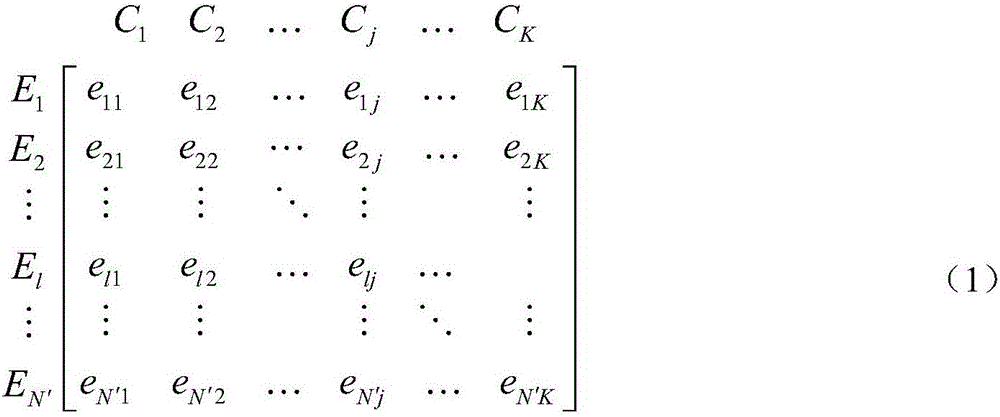A Satellite Fault Diagnosis Method Based on Adaboost Algorithm
A satellite fault and diagnosis method technology, applied in computing, computer parts, special data processing applications, etc., can solve problems such as weak fault state diagnosis ability, achieve the effect of increasing attention, enhancing performance, and improving classification accuracy
- Summary
- Abstract
- Description
- Claims
- Application Information
AI Technical Summary
Problems solved by technology
Method used
Image
Examples
specific Embodiment approach 1
[0059] Embodiment 1: The method for diagnosing satellite faults based on the AdaBoost algorithm described in this embodiment includes the following steps: Step 1: Data initialization: Counting the information provided by the satellite, constructing each fault type and each different type The corresponding matrix of the occurrence times of event features is used to establish a fault diagnosis model;
[0060] The data relationship between the state of the satellite and the feature of the event is shown in Equation (1),
[0061] C 1 C 2 ... C j ... C K
[0062]
[0063] In the formula, E l ——The characteristics of the l-th type of event, l=1,2,...N';
[0064] K——Total number of satellite states;
[0065] C j ——The jth state of the satellite, j=1,2,...K;
[0066] e lj - the number of times the l-th event feature appears in the j-th state;
[0067] At this time, each sample of the training set is given the same weight for training the weak classifier;
[0068] Ste...
specific Embodiment approach 2
[0085] Embodiment 2: The difference between this embodiment and Embodiment 1 is that the specific process of assigning the same weight to each sample in the training set described in step 1 is as follows:
[0086] Assign the same weight w to all samples in the training set (i) , as in formula (3),
[0087]
[0088] where N is the number of state samples in the training set;
[0089] w (i) ——The weight of the i-th state sample, i=1,2...,N. Other steps are the same as in the first embodiment.
specific Embodiment approach 3
[0090] Embodiment 3: The difference between this embodiment and Embodiment 1 or 2 is that: the specific process of updating the weights of the training set described in step 3 is: in order to measure the classification accuracy of the weighted training set by the weak classifier, Calculate the parameter β, such as formula (4), and then use the parameter β to adjust the weight, such as formula (5),
[0091]
[0092]
[0093] In the formula, w′ (i) ——The adjusted weight of the ith state sample, w (i) is the weight of the i-th state sample;
[0094] After the adjusted weights of all state samples in the training set are calculated, all the weights are normalized so that the sum of the weights of the samples in the entire training set is 1, and the weight of the i-th state sample is at this time.
[0095] The normalized weights are given to the training set, that is, the weights of each sample are multiplied by the event characteristics of each state sample, as shown in ...
PUM
 Login to View More
Login to View More Abstract
Description
Claims
Application Information
 Login to View More
Login to View More - R&D
- Intellectual Property
- Life Sciences
- Materials
- Tech Scout
- Unparalleled Data Quality
- Higher Quality Content
- 60% Fewer Hallucinations
Browse by: Latest US Patents, China's latest patents, Technical Efficacy Thesaurus, Application Domain, Technology Topic, Popular Technical Reports.
© 2025 PatSnap. All rights reserved.Legal|Privacy policy|Modern Slavery Act Transparency Statement|Sitemap|About US| Contact US: help@patsnap.com



